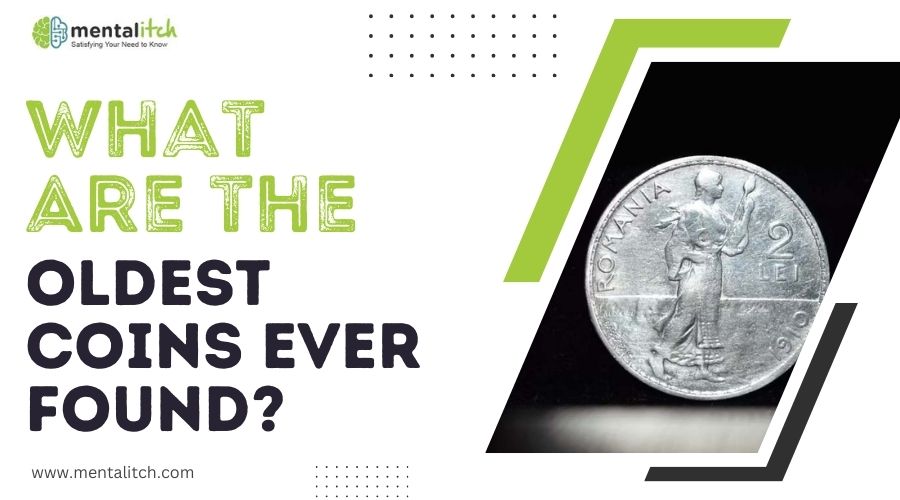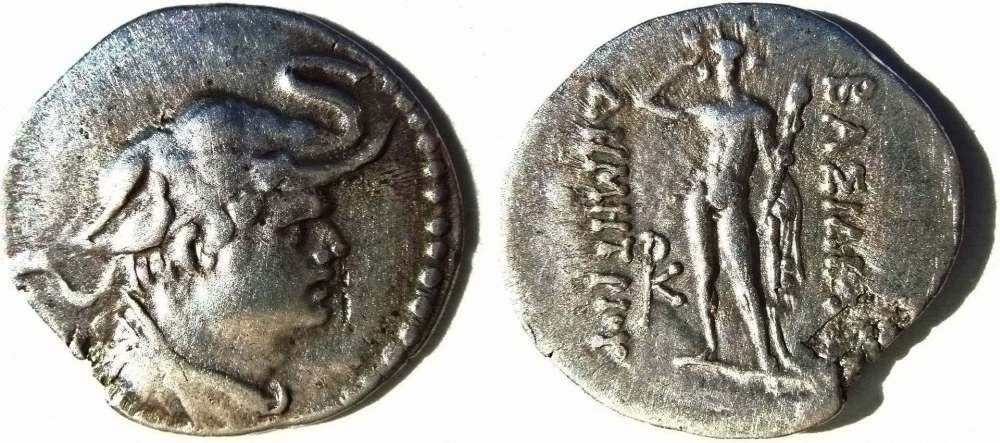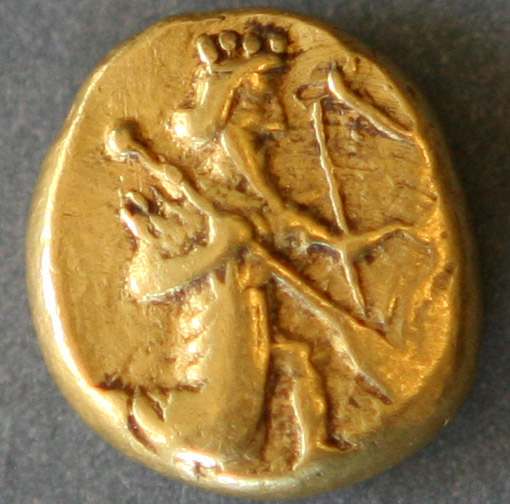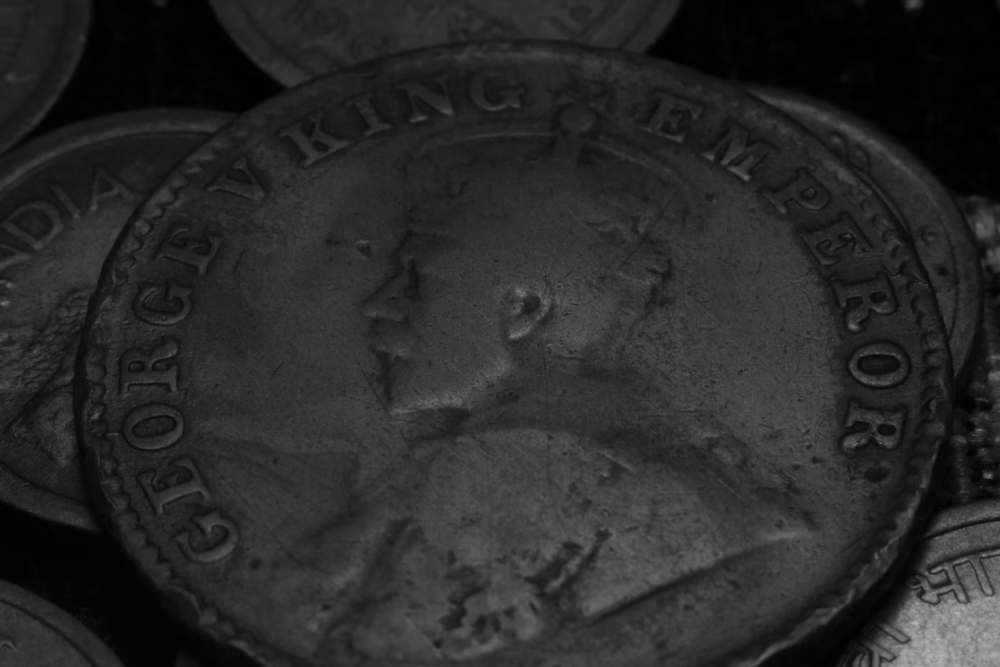Throughout history, the invention and evolution of currency have been pivotal in shaping societies, facilitating trade, and reflecting the cultural and political landscapes of their times. These small, yet significant artifacts offer a window into the past, showcasing the craftsmanship, economic strategies, and societal values of ancient civilizations. From the earliest forms of trade to the complex economies of empires, the development of these monetary tools marks a key milestone in human innovation and interaction.
Coins have not merely been tools of trade but also powerful symbols of cultural identity, political power, and technological advancement.
Let’s explore the fascinating history of early coinage, uncovering the tales and technologies behind the first currencies ever minted.
Lydian Lion (c. 610-600 BC)
The Lydian Lion holds a special place in history as the world’s first coin. Minted around 610-600 BC in the Kingdom of Lydia, now modern-day Turkey, this coin marked the beginning of the use of metal currency across civilizations. Made from electrum, a naturally occurring alloy of gold and silver, it featured the image of a lion’s head. This symbol was likely chosen to represent the strength and authority of the Lydian king, under whose reign this innovative form of currency was introduced.
This ancient coin not only facilitated trade and commerce within the kingdom but also laid the groundwork for the monetary systems that would come to dominate societies worldwide. The introduction of the Lydian Lion as a standardized medium of exchange was a revolutionary step, moving away from barter systems and paving the way for the complex economies we know today. Its creation is a testament to the ingenuity of the Lydians and their significant contribution to financial history.
Aeginetan Stater/Turtle (c. 600 BC)
The Aeginetan Stater, famously known for its turtle emblem, represents one of the earliest forms of coinage from the ancient world. Minted around 600 BC on the island of Aegina, these silver coins played a pivotal role in facilitating trade across the Aegean Sea. The turtle, a symbol of Aegina’s maritime power and its patron goddess, Aphaia, was chosen for its significance to the island’s identity and prosperity.
Crafted from silver, the Aeginetan Stater was highly valued in commerce and became a standard of trade among the Greek city-states. Its widespread circulation not only underscores the economic influence of Aegina in the ancient Mediterranean but also marks a significant step in the evolution of monetary systems. The turtle emblem on these coins is a testament to the ingenuity of ancient societies in combining practicality with cultural expression.
Miletus Lion (c. 600 BC)
The Miletus Lion coin, dating back to around 600 BC, emerges from the ancient city of Miletus, located in what is now modern-day Turkey. This coin is famed for its depiction of a lion’s head, symbolizing strength and vigilance, traits highly valued by the Ionian Greeks. Crafted from electrum, a naturally occurring alloy of gold and silver, its creation marked a significant moment in the history of currency, showcasing the advanced metallurgical skills of the era.
As one of the earliest examples of coinage, the Miletus Lion played a crucial role in the economic activities of the region. It facilitated trade by providing a standardized and widely accepted medium of exchange. This coin not only highlights the economic ingenuity of ancient societies but also serves as a testament to their artistic capabilities, with the detailed lion’s head offering insight into the symbolic importance of animals in their culture.
Phoenician Shekel (c. 600-500 BC)
The Phoenician Shekel, circulating between 600 and 500 BC, stands out as a testament to the maritime and commercial prowess of the ancient Phoenicians, who were renowned for their extensive trade networks across the Mediterranean. These silver coins, primarily used in the influential cities of Tyre and Sidon, now in modern-day Lebanon, bore symbols that reflected Phoenicia’s deep connection to the sea, such as ships and marine creatures. The shekel’s widespread acceptance in trade underscores the Phoenicians’ skill in commerce and diplomacy, facilitating transactions across diverse cultures.
Crafted with precision, the Phoenician Shekel not only functioned as a medium of exchange but also as a cultural ambassador of the Phoenician civilization. The imagery on these coins conveyed messages of wealth, stability, and a cosmopolitan outlook, essential for a society that thrived on trade. By standardizing economic transactions, the shekel played a pivotal role in the economic integration of the Mediterranean region, laying the groundwork for future monetary systems.
Spartan Obols (c. 600 BC)
Spartan Obols, emerging from the austere and militaristic society of ancient Sparta, were a simple yet profound form of currency used around 600 BC. Unlike the intricate designs found on coins from other Greek city-states, Spartan obols were characterized by their minimalistic style, reflecting the Spartan ethos of simplicity and functionality. These silver coins were integral to Sparta’s local economy, facilitating transactions within a society that famously prioritized martial prowess over luxury and wealth.
Despite their Spartan economy, these obols underscore the essential role of currency in even the most austere of societies. They facilitated the provisioning of soldiers and the exchange of goods in a community where economic transactions were tightly controlled. The Spartan obols are a testament to the universality of coinage as a medium of exchange, bridging the gap between Spartan ideals and the practical needs of daily life in ancient Greece.
Corinthian Stater (c. 575-550 BC)
The Corinthian Stater, minted between 575 and 550 BC, is a hallmark of the ancient city-state of Corinth’s economic and artistic achievement. Recognized by its iconic depiction of Pegasus, the mythical winged horse, on one side, and Athena, the goddess of wisdom, warfare, and crafts, on the other, this silver coin symbolizes Corinth’s rich cultural heritage and its dominant position in trade and craftsmanship. The choice of Pegasus, linked to Corinth’s legendary founding and its patron god Poseidon, reflects the city’s aspirations and its pivotal role in connecting various parts of the Greek world through commerce.
Beyond its practical use in trade, the Corinthian Stater was a masterpiece of numismatic art, showcasing the skill of Corinthian minters and the city’s innovative spirit. Its widespread circulation not only facilitated economic transactions across the Mediterranean but also served as a tool for projecting Corinthian power and influence. The stater’s enduring legacy lies in its contribution to the development of coinage as both a medium of economic exchange and a vehicle for cultural expression, embodying the interconnectedness of commerce, politics, and art in the ancient world.
Sicyonian Dove (c. 550 BC)
The Sicyonian Dove coins, minted around 550 BC in the ancient Greek city-state of Sicyon, are renowned for their beautiful and intricate design featuring a dove. This symbol was not chosen at random; it represented Aphrodite, the goddess of love and beauty, who was especially revered in Sicyon. The choice of the dove, a bird closely associated with Aphrodite, for the coinage reflects the cultural and religious values of the Sicyonians, intertwining the divine with the mundane aspects of economic transactions.
These silver coins were more than just a medium of exchange; they were a form of art and a symbol of Sicyon’s wealth, as well as its religious and cultural identity. The Sicyonian Dove illustrates how ancient societies used coinage to express their unique identities and values. By circulating these coins, Sicyon shared a piece of its identity with neighboring regions, highlighting the interconnectedness of commerce, religion, and culture in the ancient world.
Daric (c. 515 BC)
The Daric, introduced around 515 BC, was a gold coin that played a central role in the economy of the vast Persian Empire under King Darius I. Named after Darius himself, the Daric featured an image of the king or a warrior armed with a bow and spear, symbolizing the imperial authority and military might of Persia. This depiction not only served as a mark of authenticity but also as a tool for disseminating the image of the king across his empire, reinforcing his status and control.
As a currency, the Daric facilitated trade and tribute payments throughout the Persian territories, stretching from the Indus Valley in the east to the Aegean Sea in the west. Its high gold content made it a valuable and trusted medium of exchange, contributing to the economic stability and integration of the Persian Empire. The introduction of the Daric exemplifies how coinage was used not only for economic purposes but also for political propaganda, showcasing the sophistication of Persian statecraft and its impact on the ancient world’s economic and political landscape.
Final Words
In tracing the lineage of the world’s oldest coins, we not only uncover the roots of modern commerce but also the rich narratives of ancient societies. These coins, small as they may seem, are monumental in their historical significance, offering glimpses into the daily lives, economic practices, and artistic achievements of our predecessors. They serve as tangible connections to the past, revealing the evolution of trade networks, the rise and fall of empires, and the universal human inclination towards innovation and exchange. As symbols of power, wealth, and civilization, these ancient currencies underscore the complex interplay between economic systems and cultural development.




